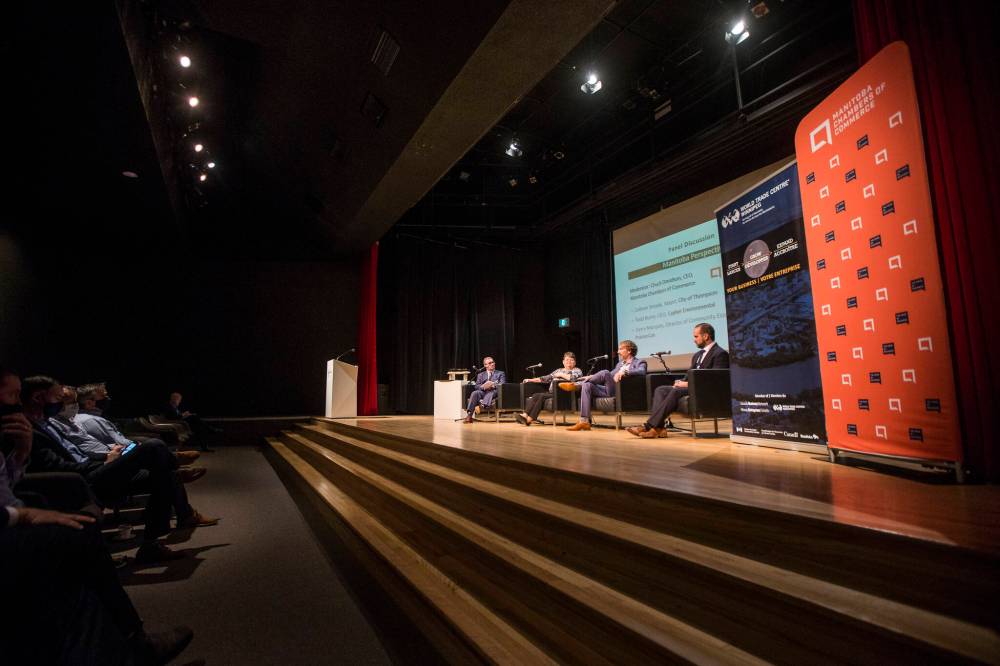Freight fright
Businesses seek to strengthen trading ties between Manitoba and Nunavut
Advertisement
Read this article for free:
or
Already have an account? Log in here »
To continue reading, please subscribe:
Monthly Digital Subscription
$1 per week for 24 weeks*
- Enjoy unlimited reading on winnipegfreepress.com
- Read the E-Edition, our digital replica newspaper
- Access News Break, our award-winning app
- Play interactive puzzles
*Billed as $4.00 plus GST every four weeks. After 24 weeks, price increases to the regular rate of $19.00 plus GST every four weeks. Offer available to new and qualified returning subscribers only. Cancel any time.
Monthly Digital Subscription
$4.75/week*
- Enjoy unlimited reading on winnipegfreepress.com
- Read the E-Edition, our digital replica newspaper
- Access News Break, our award-winning app
- Play interactive puzzles
*Billed as $19 plus GST every four weeks. Cancel any time.
To continue reading, please subscribe:
Add Free Press access to your Brandon Sun subscription for only an additional
$1 for the first 4 weeks*
*Your next subscription payment will increase by $1.00 and you will be charged $16.99 plus GST for four weeks. After four weeks, your payment will increase to $23.99 plus GST every four weeks.
Read unlimited articles for free today:
or
Already have an account? Log in here »
Hey there, time traveller!
This article was published 26/11/2021 (1415 days ago), so information in it may no longer be current.
There was plenty of frustration in the air at a conference on doing business with Nunavut early Thursday morning in Winnipeg.
The discomfort at the well-attended event organized by World Trade Centre Winnipeg was borne out of the fact that although Kivalliq, Nunavut’s western region along the west coast of the Hudson Bay, is so close to Winnipeg and the people there have such a connection to Winnipeg and there is transportation infrastructure all the way to Churchill, much of the actual flow of goods does not emanate from here.
Leaders of air, rail and Kivalliq-based distribution companies all made the point that because shipments are full one way and empty on the way back, the costs of shipping to the North is always so high.

So even though the supply ship that comes from Montreal only stops two or three times per year in the Kivalliq communities, it is still cheaper for a company like EPLS (Eskimo Point Lumber Supply) Group of Companies, to send containers from Winnipeg to Montreal than it is to send them directly north.
Derrick Webster, the chief operating officer of EPSL, said he recently sent 300 containers to St. Catharines to the be shipped to Kivalliq.
“Trucking from Winnipeg to Montreal is cheaper than Winnipeg to Thompson,” he said. “There is just so much traffic in that direction that we can broker a half truckload and there are lots of opportunities. There are only one or two companies going to Thompson. That is one of the biggest cost of using that channel. They have to pay their driver who might come back empty.”
Gary Bell, the CEO of Calm Air, made the same point.
Calm Air flies to Rankin Inlet from Winnipeg twice a day with a 737, about half of which is dedicated for freight.
“The biggest thing we would love to see at some point in time is goods travelling in both directions,” he said.
Calm Air flights to Rankin from Winnipeg are about the same distance as Winnipeg to Vancouver, but passenger loads to Rankin are about 50 per cent of what they are to Vancouver.
“But we have the same operating costs,” he said. “We use the same amount of fuel, the same size flight crew.”
Marc Cool, the COO of Arctic Gateway Group that now owns and operates the Hudson Bay Railway said the railway infrastructure has the capacity to haul 40-50 car trains. It is currently running trains with four or five cars.
Colleen Smook, the mayor of Thompson, said a key to opening up trade to both Nunavut and to northern Manitoba, is for government and industry to take the time to travel to the North.
“I think that is changing,” she said. “We’re not just looking for handouts, we want to partner with others.”
For Derek Earl, vice-president of World Trade Centre Winnipeg, the reason to have such a conference now is to get companies in southern Manitoba planning for northern trade in preparation for infrastructure work that is in the planning stages for Nunavut.

There is plenty of housing construction going on throughout the region, lots of mineral exploration (as well as new mines near Rankin Inlet and Baffin Island) and the $1.6 billion Kivalliq Hydro-Fibre Link project is getting closer to becoming a reality.
Chuck Davidson, the CEO of the Manitoba Chambers of Commerce, who has co-chaired a northern development initiative for the province, said whenever there are events about the north in Winnipeg, people from the north always travel south.
“We have got to get the folks from the south to travel up there and see what is going on,” he said.
Smook, who touted the fact that Thompson needs to raise just $15 million more for a $100 million airport development, said that over the next five years there is more than $130 million in federal and provincial spending promises.
Many of the participants spoke about the lack infrastructure in Kivalliq — there are no roads connecting the 25 communities in the region — the lack of economies of scale, training and education deficits and the realities of needing to plan shipments months in advance so as not to miss the next ship from Montreal.
A consensus exists for a need for some kind of regular re-supply network out of Churchill.
But for that to happen someone with vision — and deep pockets — will have to step forward.
martin.cash@freepress.mb.ca

